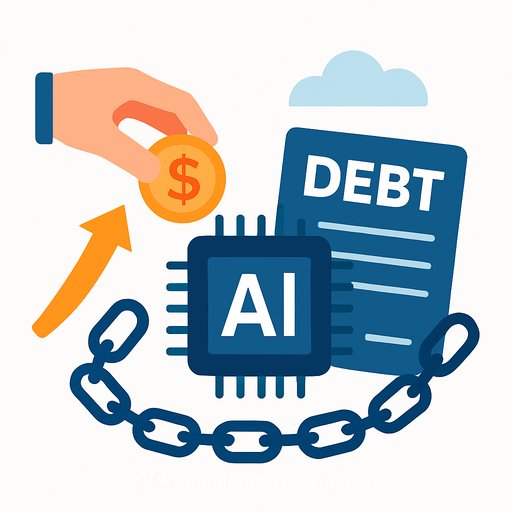AI ROI in Professional Services: A Practical Playbook for Leaders
AI is moving from experiment to execution across professional services. Yet value is uneven, and skepticism lingers until leaders show a plan that trims waste, improves quality, and grows revenue.
According to the Future of Professionals Report 2025, more than half (53%) of organizations already see returns from AI. The takeaway: a focused strategy beats ad hoc pilots, and ROI must include more than cost savings.
What to Measure: ROI That Goes Beyond Cost Cuts
Tangible outcomes
- Time savings: Track hours saved per role per week and where that time gets reallocated. Many teams report five hours saved weekly.
- Error reduction: Monitor error rates, rework, and quality escapes before vs. after AI adoption.
- Risk mitigation: Measure avoided incidents, fraud flags caught, litigation/tax exposure reduced, and audit findings.
- Efficiency: Capture cycle time, throughput, and on-time delivery improvements across core workflows.
Intangible outcomes that still drive value
- Accuracy and reliability: Validate output quality with spot checks, peer review, and benchmark tests.
- Client experience: Track response time, Net Promoter Score, upsell/cross-sell from faster, better delivery.
- Decision quality: Measure better decisions via win rates, pricing accuracy, risk-adjusted returns, and case outcomes.
- Talent retention and growth: Monitor engagement, turnover, training completion, and time-to-proficiency in new roles.
Keep ROI simple and transparent. For each use case: quantify time saved, errors avoided, revenue uplift, and risk reduction, then subtract implementation and run costs.
The Four Layers of Strategic AI Adoption
1) Strategy
- Set 3-5 enterprise use cases tied to revenue, cost, and risk goals.
- Define success metrics, data sources, and model oversight upfront.
- Fund with stage gates based on validated impact, not hype.
2) Leadership
- Add AI fluency to leadership and governance charters.
- Establish an AI steering group with finance, legal, risk, security, and operations.
- Communicate clear guardrails and a benefits narrative that addresses concerns.
3) Operations
- Redesign workflows, pricing, and delivery to exploit automation, not just bolt tools onto old processes.
- Stand up new roles: prompt engineers, AI product owners, data stewards, and model risk leads.
- Use AI to launch advisory and strategic services, not just speed up existing tasks.
4) Individual Users
- Give people guided playbooks, sandboxes, and feedback loops.
- Set personal AI goals per role and measure regular usage and outcomes.
- Reward adoption that drives impact, not experimentation for its own sake.
Avoid the Strategy-User Disconnect
Misalignment is common. Many professionals set personal AI goals without knowing the enterprise plan, while others sit on the sidelines even when a plan exists.
- Make it explicit: Publish the org strategy, use-case catalog, and approved tools.
- Tie goals: Link team OKRs to the top use cases and report impact weekly.
- Standardize data: Provide shared templates, prompts, and checklists to reduce variance.
Address Reservations and Keep It Ethical
Concern is rational. The fix is clear governance, training, and proof that AI augments people rather than replaces them.
- Adopt an AI risk framework with human review, audit trails, and incident reporting. See the NIST AI Risk Management Framework.
- Protect data with role-based access, encryption, and vendor due diligence.
- Implement bias testing, source attribution, and clear client disclosures.
Prepare for Agentic AI and Multistep Workflows
AI is moving from suggestions to end-to-end execution across multi-step tasks. Your platform choice should reflect that future.
- Security and privacy: Data isolation, SOC 2/ISO compliance, vendor transparency.
- Auditability: Logs, citations, versioning, and reproducible runs.
- Integrations: Connect to DMS, CRM, ERP, eDiscovery, billing, and data lakes.
- Controls: Budget limits, rate caps, role permissions, red-teaming.
- Quality: Domain-tuned models, retrieval quality, and factual accuracy testing.
A 90-Day Adoption Plan You Can Run
Days 0-30: Prove value fast
- Pick three high-volume, rules-based use cases (e.g., research summarization, first-draft analysis, intake triage).
- Baseline current time, error, and cycle-time metrics; define acceptance criteria.
- Pilot with 10-20 users; track hours saved and quality lifts weekly.
Days 31-60: Operationalize
- Automate handoffs, templates, and approvals around the AI outputs.
- Add human-in-the-loop checks and publish prompt/playbook libraries.
- Start client-facing use cases where quality is proven.
Days 61-90: Scale and report
- Expand to adjacent teams; enforce governance and access controls.
- Report ROI: time saved, rework reduced, revenue impact, risk metrics.
- Set a reinvestment rule: direct a portion of saved hours into new services and client value.
Reinvest the Gains
Savings without reinvestment stalls momentum. Create a simple policy: allocate a fixed share of time saved to client experience upgrades, new offerings, and data quality initiatives.
This keeps your flywheel turning: lower cost, higher quality, better service, and compounding impact.
Skill Up Your Team
Upskilling is the fastest lever for adoption and measurable outcomes. Build role-based learning paths so managers, analysts, finance, and legal practitioners can apply AI to daily work.
Bottom Line
AI ROI is real when you measure what matters, align leaders and users, and run a clear adoption plan. Organizations that move with intent will widen the gap on efficiency, quality, and growth.
Pick three use cases, define the metrics, protect the data, and reinvest the wins. That's how you turn AI into durable performance - and stay ahead.
Your membership also unlocks:










